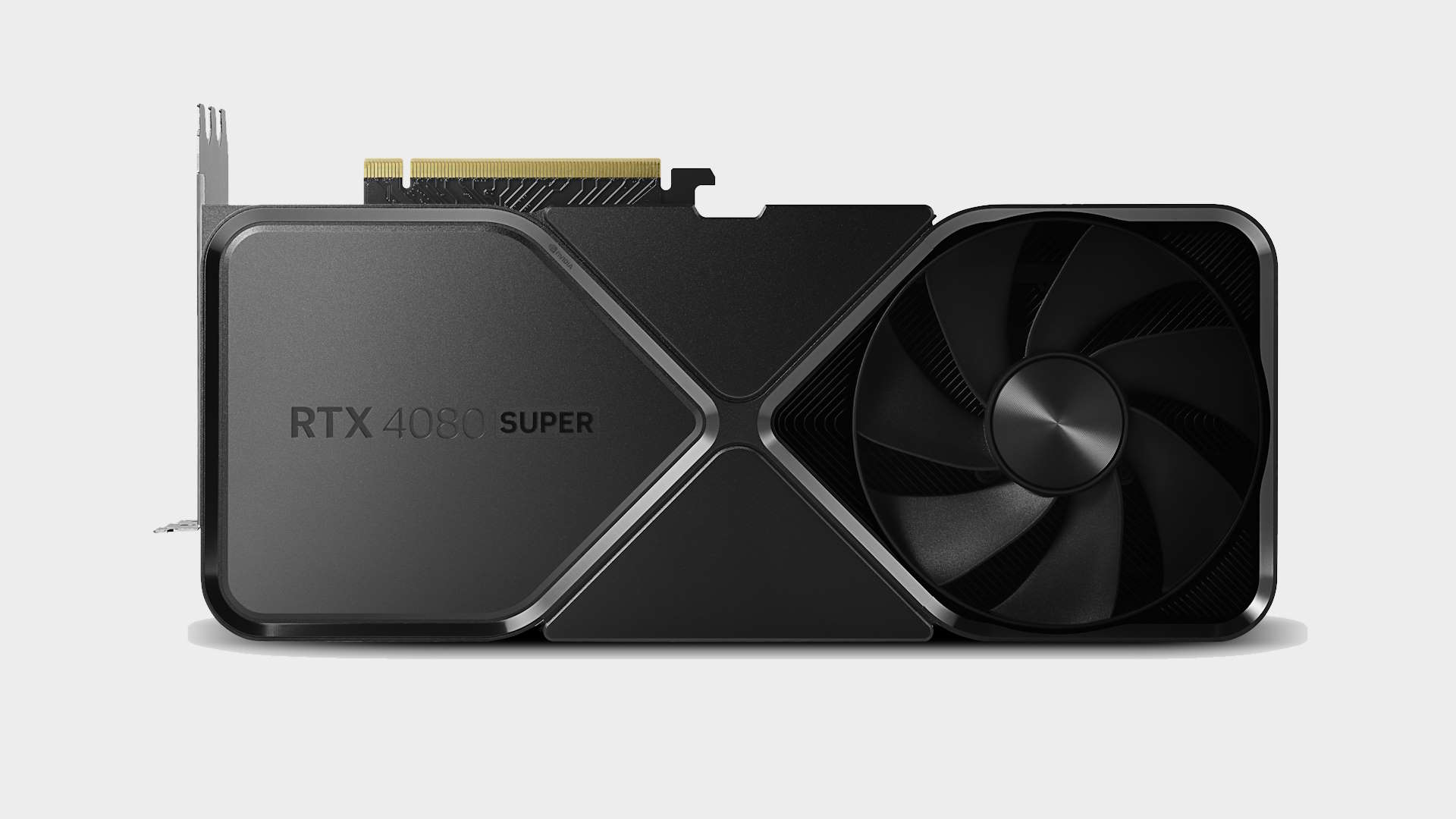Nvidia really cannot keep a secret, can it? Yes, in a surprise to absolutely no-one, CES brings us the new GeForce RTX 40-series Super cards. The Ada Lovelace architecture refresh has been rumoured for a long while now, and here it is, either offering a little more performance for either the same sticker price, or in one particular case a fairly significant decrease.
The green team is launching three new Super cards, two of which are completely replacing their non-Super forebears and the third pushing the price down of its older Ada sibling. The first to launch this month is arguably the most interesting from a pure silicon standpoint—the RTX 4070 Super is the card getting the biggest GPU upgrade, which Nvidia is estimating will deliver up to 20% higher performance.
From the original RTX 4070 AD104 GPU’s 5,888 CUDA cores you’re now getting 7,168 of the clever wee things. In terms of raw floating point performance that’s a change from around 29 TFLOPS to 36 TFLOPS, though you’ll likely not see that percentage perf hike in terms of frame rates, it has to be said.
It is just the GPU which has changed, not the memory specification for the RTX 4070 Super, however, so you’re still getting 12GB GDDR6X at 21Gbps, and it’s coming in at the same price as the older card, too. That means it’s a $599 card at launch this month—going on sale on January 17th—though it is knocking back the MSRP of the RTX 4070 to $549. Though I expect that’s going to be resolutely sold below the $500 mark at retail.
But the one that might just grab the most headlines is the RTX 4080 Super which is getting a $200 haircut down to $999, launching on January 31st, and killing the old $1,200 RTX 4080 in the process. It’s using the full AD103 GPU, which means you’re getting all 80 SMs and 10,240 CUDA cores that big boi silicon has to offer.
Though, admittedly, that’s just a 5% increase in core count and, by Nvidia’s own reckoning, only likely to deliver maybe 1 – 2% higher frame rates in games. You are getting faster memory, however, with the RTX 4080 Super featuring 23Gbps GDDR6X memory… again though it’s a very minor increase over the 22.4Gbps memory of the OG card.
(Image credit: Nvidia)
The boosted GPU and memory specs are not going to make anyone who spent good money on an RTX 4080 over the past year or so green with envy, or make them regret their purchase. The new sticker price of $999, however, absolutely will do. It was a rare thing indeed to find an old RTX 4080 for below MSRP—we’ve only ever found one Prime member exclusive deal in the past 12 months that took to an equivalent price of the new Super—and there will have been many users who paid far more than the original $1,200 price.
They’re going to be choking on their smooth ray traced frame rates now, I shouldn’t wonder.
(Image credit: Future)
Best CPU for gaming: The top chips from Intel and AMD.
Best gaming motherboard: The right boards.
Best graphics card: Your perfect pixel-pusher awaits.
Best SSD for gaming: Get into the game ahead of the rest.
The weird middle-child—the RTX 4070 Ti Super with its stupid multi-suffixed name—is the only one to be sitting on an entirely new GPU. Now using the AD103 chip of RTX 4080 fame, the RTX 4070 Ti Super is getting precisely 10% more cores, from 7680 to 8448, and that will likely equate to around 10% higher frame rates on average, or just a little bit below.
You could almost argue it’s an RTX 4080 LE if you wanted to really complicate the whole GPU family naming scheme.
That’s only going to be helped by the fact that, as it’s on the bigger GPU, it has a wider 256-bit aggregated memory bus and 16GB GDDR6X memory, though it’s still running at 21Gbps.
This card is completely replacing the old RTX 4070 Ti, as it’s launching on January 24th at the same $799 price tag as the original card.
_____________________________________
PC Gamer’s CES 2024 coverage is being published in association with Asus Republic of Gamers.











